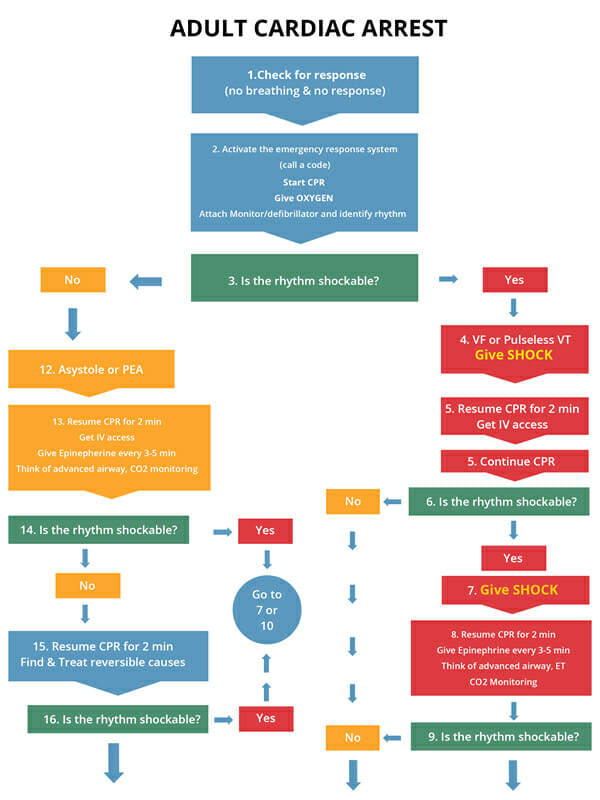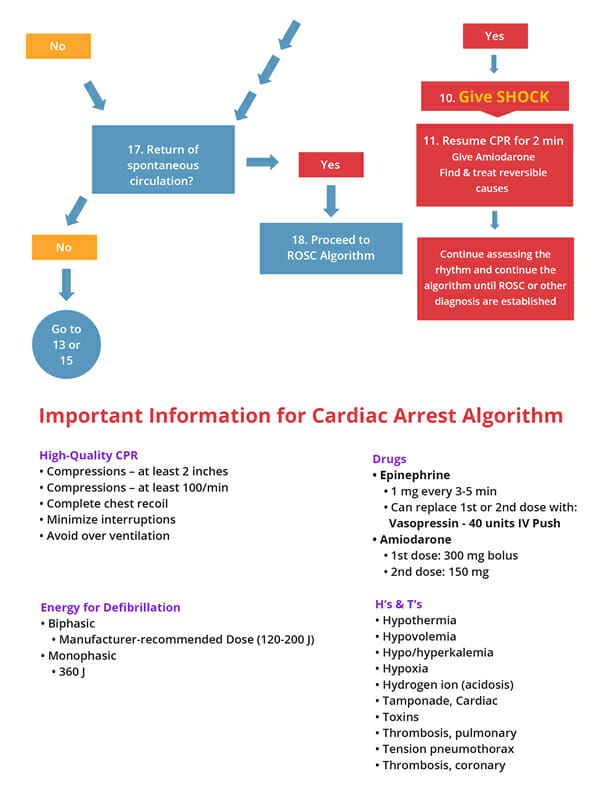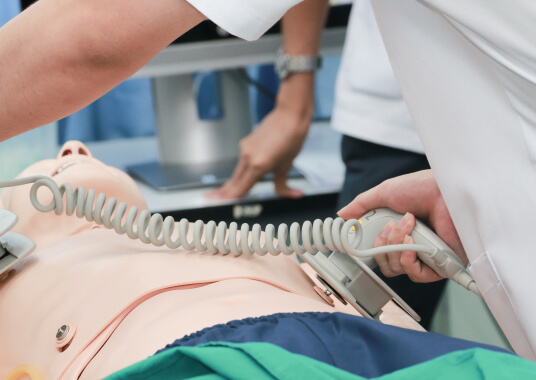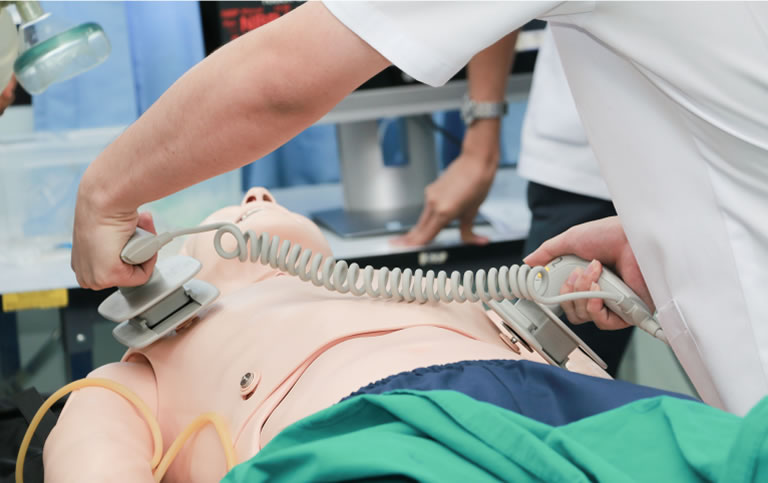Management: Initiate the
cardiac arrest algorithm if the patient still has no pulse and does not respond to
BLS
- Continue CPR for 2 minutes, starting with 30 chest compressions and get IV/IO access
- Pause to check rhythm for 10 seconds. If unshockable rhythm, do a 3 point pulse check (carotid, radial, femoral) and if there is a pulse continue to post-cardiac arrest care. If the rhythm is shockable, give 1 shock of 120-200 Joules and resume CPR for 2 minutes
- During CPR give the following vasopressors
- Epinephrine 1 mg IV/IO and repeat every 3 to 5 minutes then Amiodarone with 1st dose of 300 mg bolus, and 2nd dose of 150 mg bolus OR lidocaine with 1st dose of 1 to 1.5mg/kg, and 2nd dose 0.5 to 0.75mg/kg
- Pause to check rhythm for 10 seconds. If rhythm is shockable, give 1 shock of 120-200 Joules and resume CPR for 2 minutes
- Administer the following antiarrhythmic drugs after 1st or 2nd dose of epinephrine
- Consider advanced airway if needed. Once an advanced airway is placed, the breaths can be continuous. Use waveform capnography to confirm and monitor ET placement.
The following algorithm is for Adult Cardiac Arrest:


Treatment of VF/VT in Hypothermia
Severe accidental hypothermia in patients with VF and/or VT have a body temperature of <30 degrees Celsius or <86 degrees F. Defibrillation is appropriate in this case; however, additional shocks may need to be given. For those in cardiac arrest with moderate hypothermia (under 36 degrees Celsius), do CPR, defibrillation, give medications, and continue warming the core temperature to raise it above 35 degrees Celsius (95 degrees F).
Administration of drugs is usually contraindicated in patients as it may increase levels of toxins due to decreased metabolism. The best treatment for the patient is to focus on raising the core temperature. Administration of vasopressor as per the guidelines of ACLS can be effective while rewarming the patient. Administration of anti-arrhythmic drugs is not effective in hypothermic patients.
Route of Administration of Drugs in Cardiac Arrest
There are 2 routes of drug administration which are effective and will not interfere with high-quality CPR and defibrillation. These routes are:
- IV (Intravenous)
- IO (Intraosseous)
The IV route is the most approved route for administrating fluids and medications. The 2 routes are through the peripheral IV line and the central IV line.
The IO route is used to inject medication directly into the bone marrow. The IO access can be used in all age groups, but is preferred in pediatric patients. It can be accessed in 30-60 seconds and can be used with any medication that is used in the IV route.
Medications used in Cardiac Arrest
- Vasopressors
- Epinephrine – administer 1 mg IV/IO every 3-5 minutes
- Vasopressin – 1 dose of 40 units (IV or IO) may replace the first or second dose of epinephrine
- Antiarrhythmic Agents
- Amiodarone – given in VF or pulseless VT
- First dose of 300 mg IV/IO push
- If no response to first dose, consider 2nd dose of 150 mg after 3-5 minutes
- Lidocaine – consider this if no amiodarone
- First dose of 1 to 1.5 mg/kg IV/IO
- Repeat every 5 to 10 minutes at dosage of 0.5 to 0.75 mg/kg IV/IO
- Magnesium Sulfate – stop recurrent torsades de pointes
- Loading dose of 1 to 2 g IV/IO diluted with 10 ml D5W should be administered for 5 to 20 minutes.
Learning Outcomes:
You have completed Chapter IX. Now you should be able to:
- Apply the Cardiac Arrest Algorithm to VF and Pulseless VT
- Recognize VF and pulseless VT in a patient
- Understand the drugs which are needed during Cardiac Arrest
- Know what to do in patients with hypothermia



